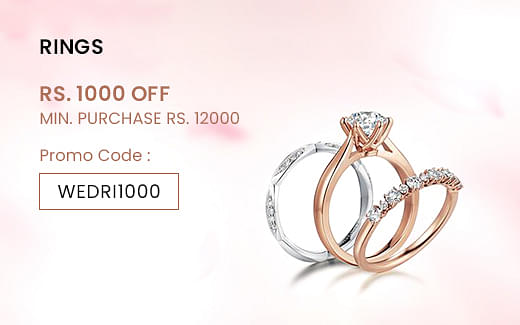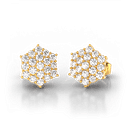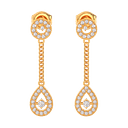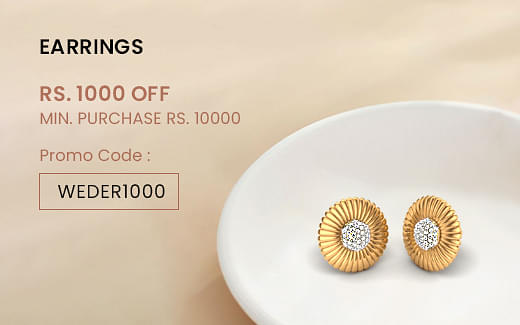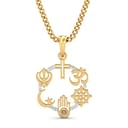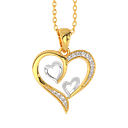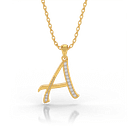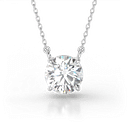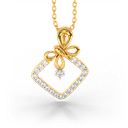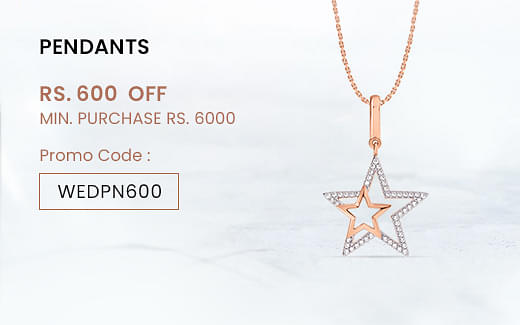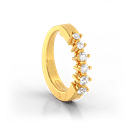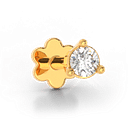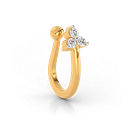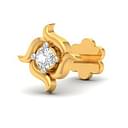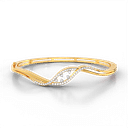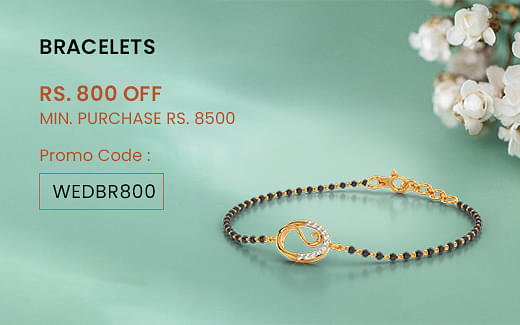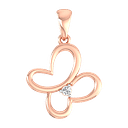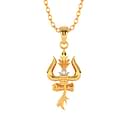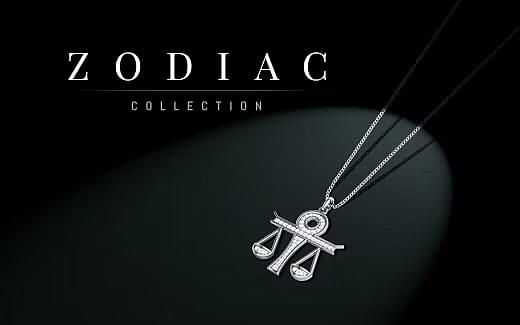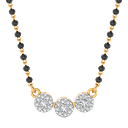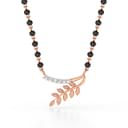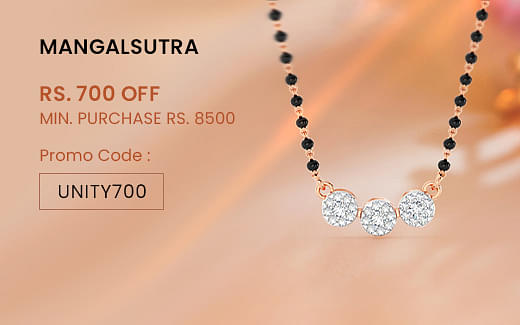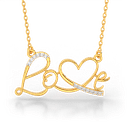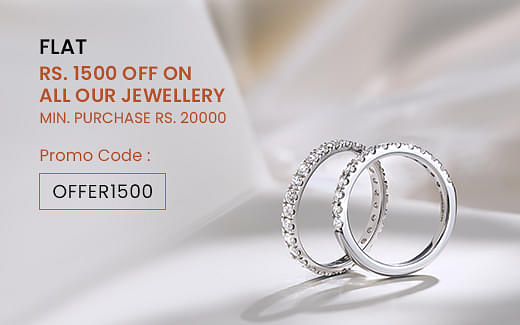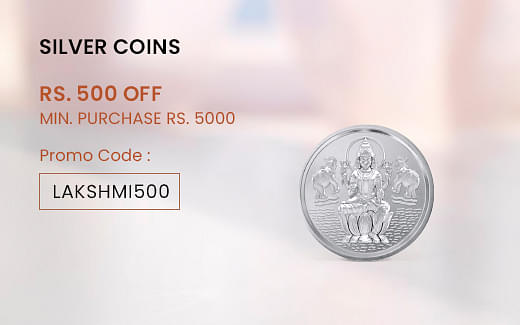In order to know the history of Indian Jewellery, I must take you back to the history of the nation itself since both of them are almost similar in terms of their birth. In fact, India is the first country in all of Asia to have started making and wearing Jewellery.
Approximately, 5,000 years ago people of the country started developing inquisitiveness about the way they can improve their appearance by wearing fine jewellery.
Almost unsurprisingly it worked like a charm and people in India started adorning themselves with metals and precious stones, especially women. In India, one will seldom or almost never encounter a woman who does not like to adorn herself with jewellery.
Indus Valley: The place where it all began
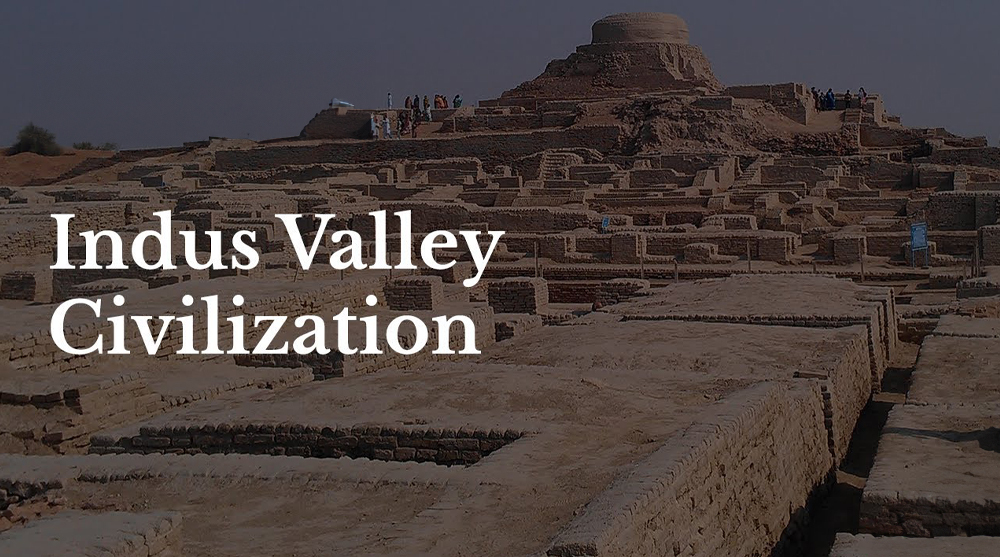
Around 5000 years ago, India was the largest producer and exporter of beads. It was the first country to invent the diamond drill and later on the technique of mining the diamonds with the help of this drill was taught to the Roman people.
The jewellery experts of the civilization made use of gold and some less precious stones like turquoise, agate, and carnelian and turned them into tubular-looking items giving them a pattern of some sort.
The individuals belonging to this civilization are considered to be very sophisticated which was determined by the fact that the jewellery they wore was extremely well engineered with a great sense of aesthetics.
Mughals and their relation with the jewellery
The Mughal Empire ruled and dominated India five centuries ago. During the time of the Mughals in India the artists belonging to the community drastically improvised the art of making jewellery.
The engraving of precious stones in metals was a technique developed by the Mughal artists. They also used other techniques like enamelling and casting to make different kinds of jewellery. The Mughals were known for their love for jewellery and most of the time they would wear jewellery even when they went out hunting.
History of Indian Jewellery- More than just a mere piece of embellishment
Jewellery in India is just not a piece of precious metal and diamonds that one uses for adorning oneself, rather it is considered to be security that can be made use of in times of financial crisis.
The number of precious items owned by an individual almost defines the status and is perceived as richer than someone who owns less jewellery.
Over the years jewellery making which is considered an art in this country has seen tremendous evolution. The unique designs and the intricate attention to minute details put forth by the craftsmen while making it is what beautifies it.
Modern-day trend
The old-age tradition of ornamenting oneself with precious stones and metals has become very popular in the contemporary era. Today jewellery is not just limited to gold or diamonds, rather it is worn in so many different forms and made with many other precious metals apart from gold i.e. silver, platinum, pearl, etc. In fact, people have started wearing jewellery with different colours of gold i.e. white-coloured gold and rose-coloured gold.
The skill of creating decorative fine jewellery, with great intricacy has been in the DNA of the country throughout its existence. The reason behind the industry flourishing so much is because of the importance and remuneration given by the kings to the artists who were a part of it.
Indian jewellery today is available at all price points. From simple earrings to necklaces, rings, bracelets, anklets, toe rings and more. There is no dearth of choices available for you.
Jadau
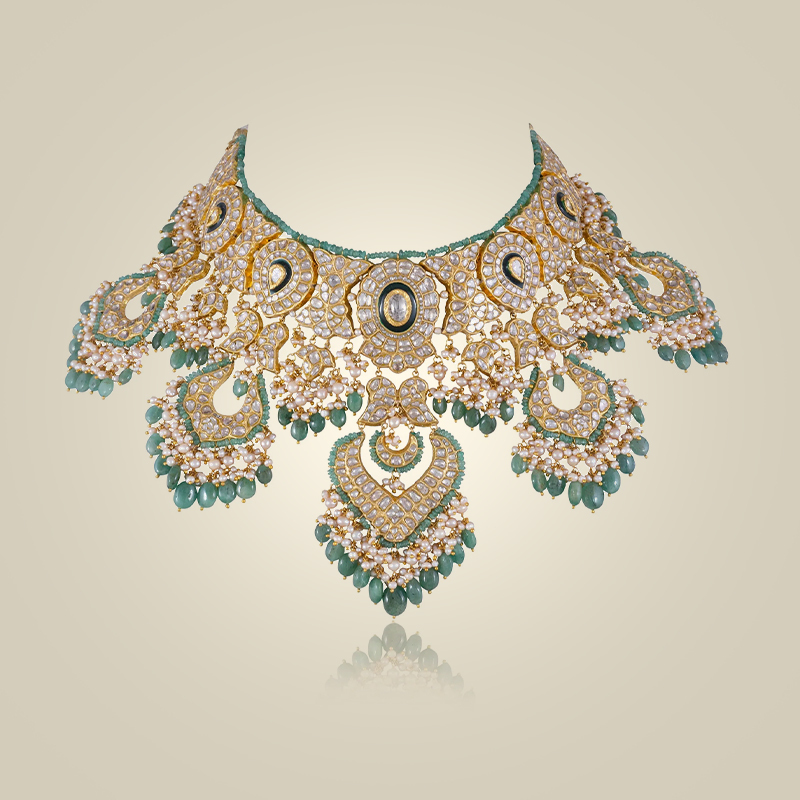
Jadau is a traditional form of jewellery worn by women during festivals and occasions. Jadau is a type of necklace that consists of three strands of pearls, emeralds, and sapphire strung together. These pearls are usually set in gold or silver. This style of jewellery is mostly worn by married women.
Kundan
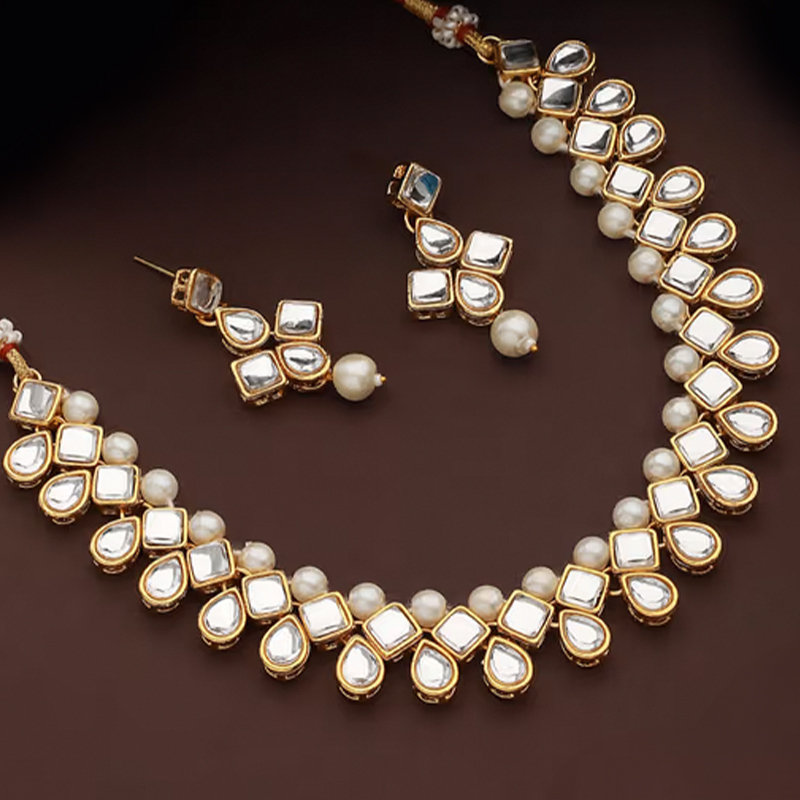
Kundan is a traditional form of Indian jewellery-making that dates back over 2,000 years. This exquisite art form originated in the royal courts of Rajasthan and Gujarat, and it continues to be highly cherished and practised to this day. The word “Kundan” itself is derived from the Sanskrit language, meaning “highly refined” or “pure.”
The hallmark of Kundan jewellery lies in its intricate craftsmanship and the use of precious gemstones. Unlike other jewellery-making techniques, Kundan involves setting carefully cut and polished gemstones into a base of highly purified gold. This process requires immense skill and precision, as the gold is shaped to form a hollow frame that holds the gemstones securely in place.
Kundan is a term used to describe a variety of jewellery including kundan bangles, bracelets, rings, necklaces, earrings, pendants, etc.
Lacquer
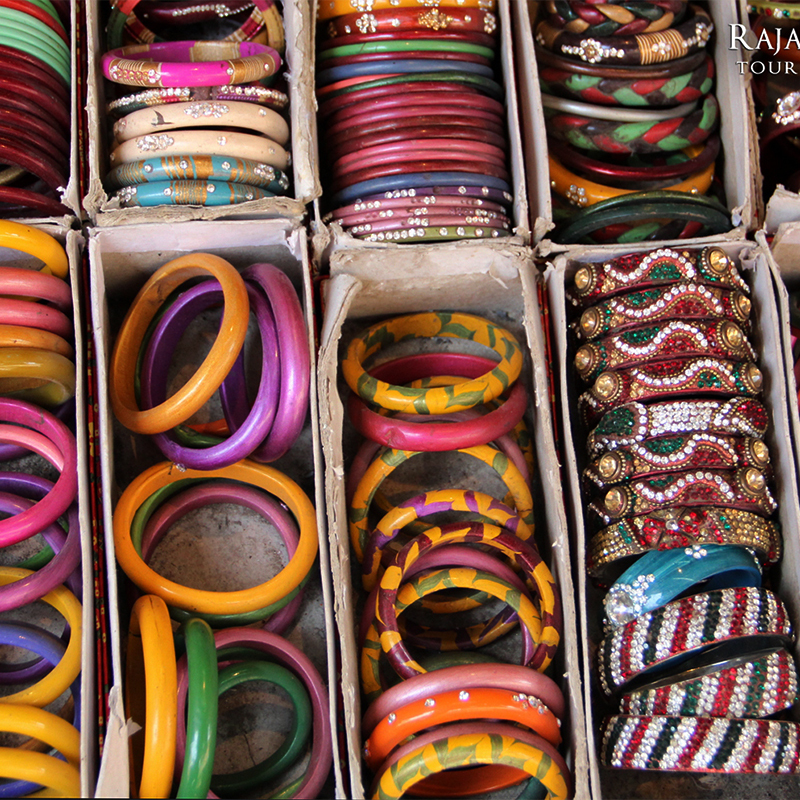
Jewellery made from lacquer or lac originates in Rajasthan and has a variety of applications. These pieces are usually adorned with glass beads, decorative wire, and mirrors.
Meenakari
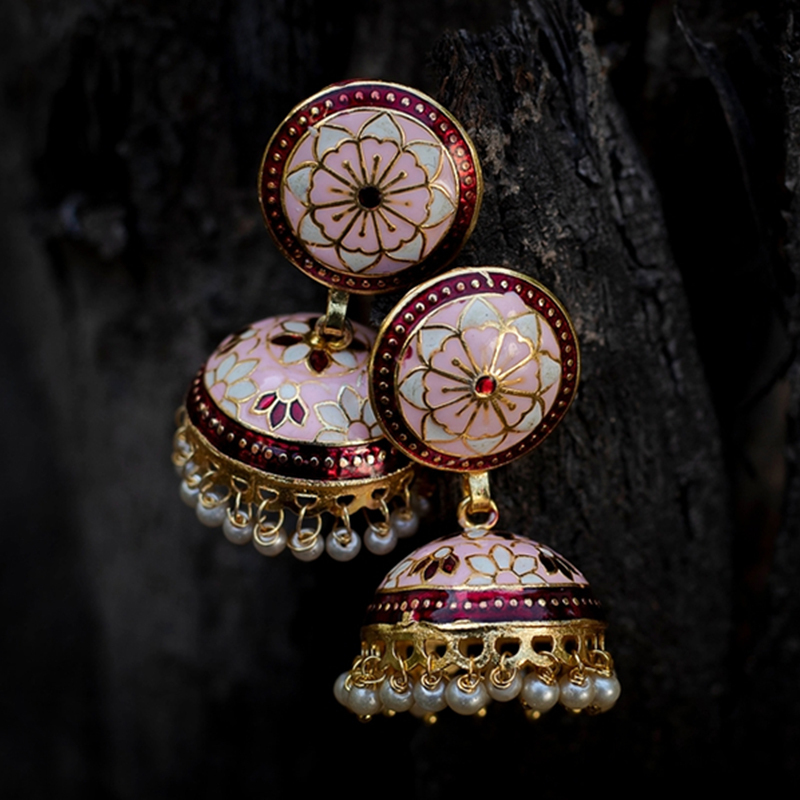
Meenakari is a method of decorating jewellery using hand painting. Meenakari jewellery is made by applying various types of paints on the surface of the metal. This is done either manually or using stencils.
HISTORY OF TRADITIONAL INDIAN JEWELLERY
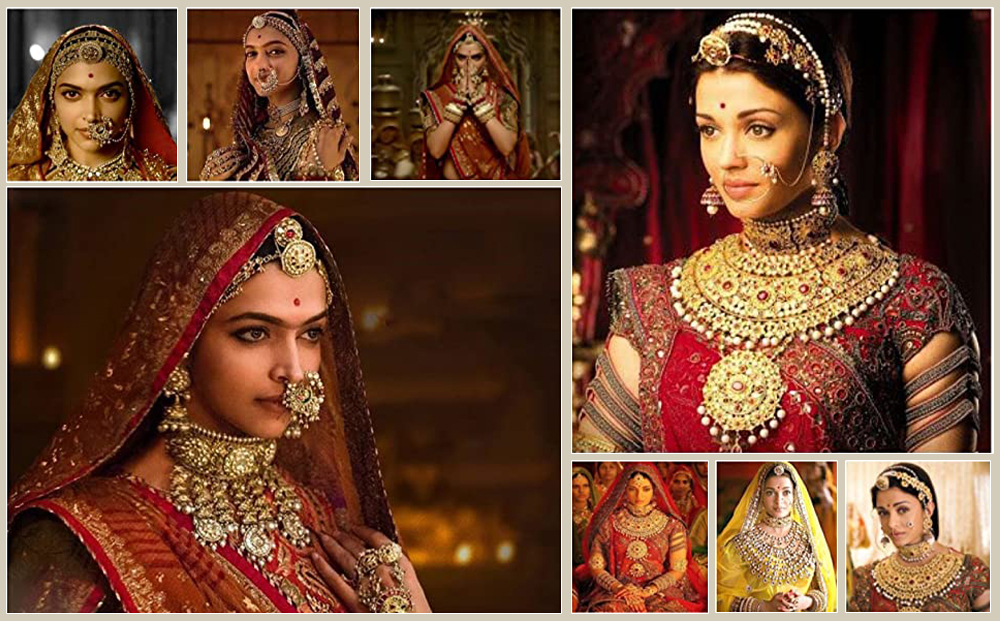
The history of jewellery in India is as old as the country itself, dating back to around 5000 BC when it was first used by the Indus Valley Civilization for ornamentation.
India is a land of rich tradition and culture, where jewellery has been an integral part of our lives for thousands of years. From the earliest times to the present day, India’s jewellers have made their mark.
Here are some of the most famous Indian traditional jewellery worn today;
JEWELED BRAID, PAASA, MAANGTIKA
You reflect your identity through your hair. Straight, curly, long. Who doesn’t love to accessorize their hair with some accessories? Jewelled braid, paasa, and maangtika are hair jewellery that is generally worn by South Indian brides. These all accessories are categorized as south indian gold jewellery and have been very famous all over India for decades.
CHANDBALIS, JHUMKAS, KANVELIS, NATH
Chandbalis, jhumkas, and nath are the traditional jewellery items worn on the ear by Indian women and brides. The majority of these objects are made from silver or gold and are found in nearly every corner of India.
RANI HAAR, GULBANDH, SATLADA, KAMARBANDH
These are the traditional jewellery worn by Indian brides. The rani haar, gul bandh, and satladha are neckpieces that are worn around the neck, and the kamar bhand is a jewellery piece that is generally worn on the waist, they are traditionally worn by Indian royalty.
BANGLES, BRACELETS, HAATHPHOOL
Bracelets, bangles, and haath phool are common accessories worn by Indian women on their wrists. They are generally made up of precious metals and precious gemstones like rubies, diamonds, emeralds, sapphires, and others.
FAQs:
Who wore the first jewellery in India?
Indus Valley civilization was one of the first to make gold jewellery in India. According to history, the first jewellery was worn by the Cro-Magnons, ancestors of Homo sapiens, about 40,000 years ago.
Which countries have the most expensive jewellery?
According to World Gold Council (WGC), the world’s top four nations for gold production are India, China, the U.S., and UAE. With over 60% of global demand coming from just two countries, India, and China the WGC predicts that the price of gold will continue to rise.














